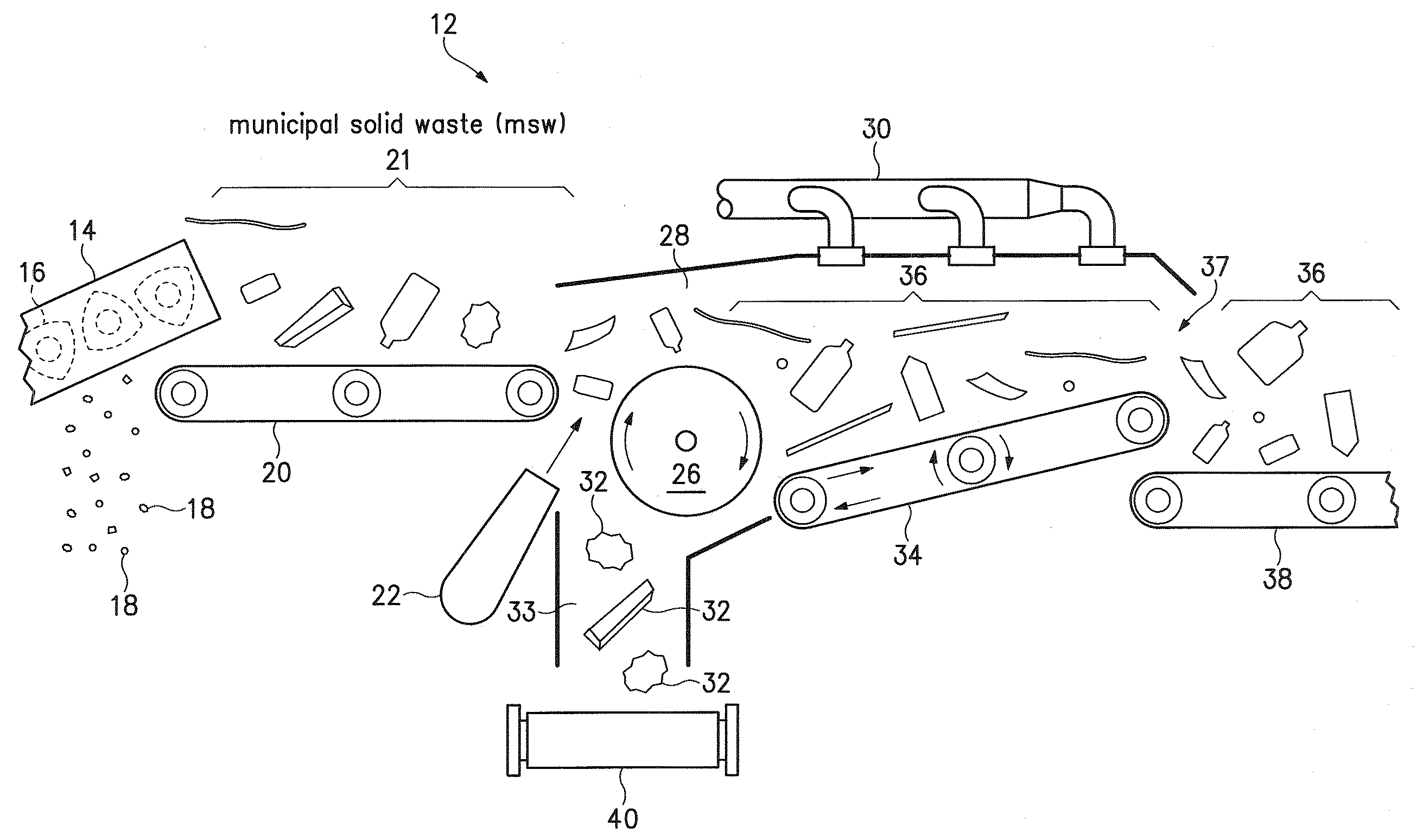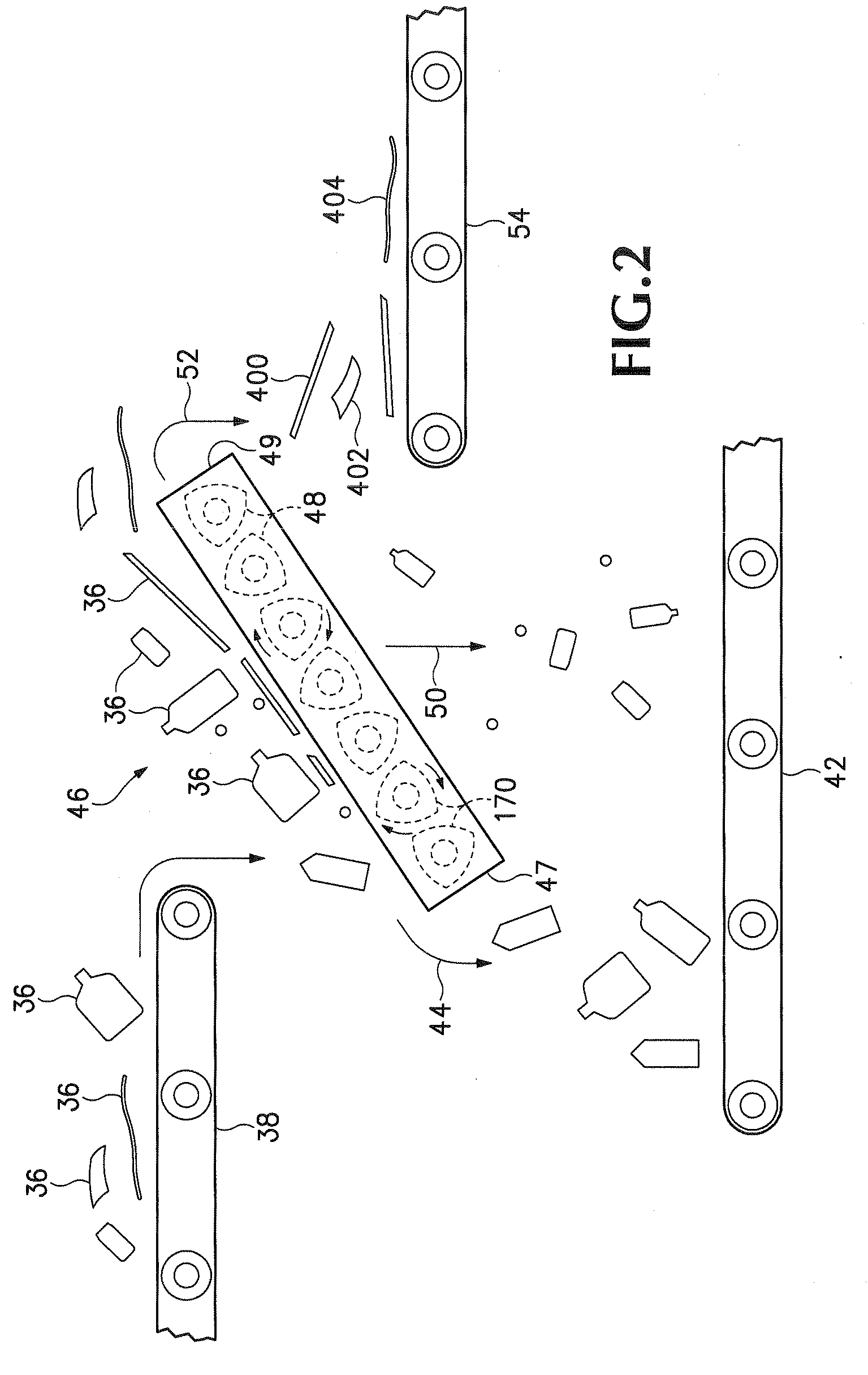Separation system for recyclable material
a recycling and separation system technology, applied in the direction of electrostatic separation details, solid separation, chemical instruments and processes, etc., can solve the problems of inability to effectively separate certain msw recyclable materials, relatively flat, thin, flexible msw materials, and relatively inability to sort these different plastic and fiber materials according to size or weigh
- Summary
- Abstract
- Description
- Claims
- Application Information
AI Technical Summary
Benefits of technology
Problems solved by technology
Method used
Image
Examples
Embodiment Construction
[0018]Recyclable Municipal Solid Waste (MSW) materials include, but are not limited to, fiber material such as newspaper, mixed paper, Old Corrugated Cardboard (OCC), other cardboard, office paper products, plastic bags, and other plastic films. Recyclable MSW can also include relatively light plastic containers, aluminum containers, tin containers and other metal containers or shapes. The material in all of these MSW recyclable items are used for making new products that may use the same material as the recycled items. For example, the paper and cardboard fiber material is re-pulped to make new paper, cardboard, or other fiber products. The recyclable MSW PolyEthylene Terephthalate (PET), High Density PolyEthylene (HDPE), PolyVinyl Chloride (PVC), or other plastic containers and plastic films are shredded and melted into new containers or plastic bags and any other types of plastic products that may not be related to the original recovered product. For example, PET bottles can be u...
PUM
 Login to View More
Login to View More Abstract
Description
Claims
Application Information
 Login to View More
Login to View More - R&D
- Intellectual Property
- Life Sciences
- Materials
- Tech Scout
- Unparalleled Data Quality
- Higher Quality Content
- 60% Fewer Hallucinations
Browse by: Latest US Patents, China's latest patents, Technical Efficacy Thesaurus, Application Domain, Technology Topic, Popular Technical Reports.
© 2025 PatSnap. All rights reserved.Legal|Privacy policy|Modern Slavery Act Transparency Statement|Sitemap|About US| Contact US: help@patsnap.com



